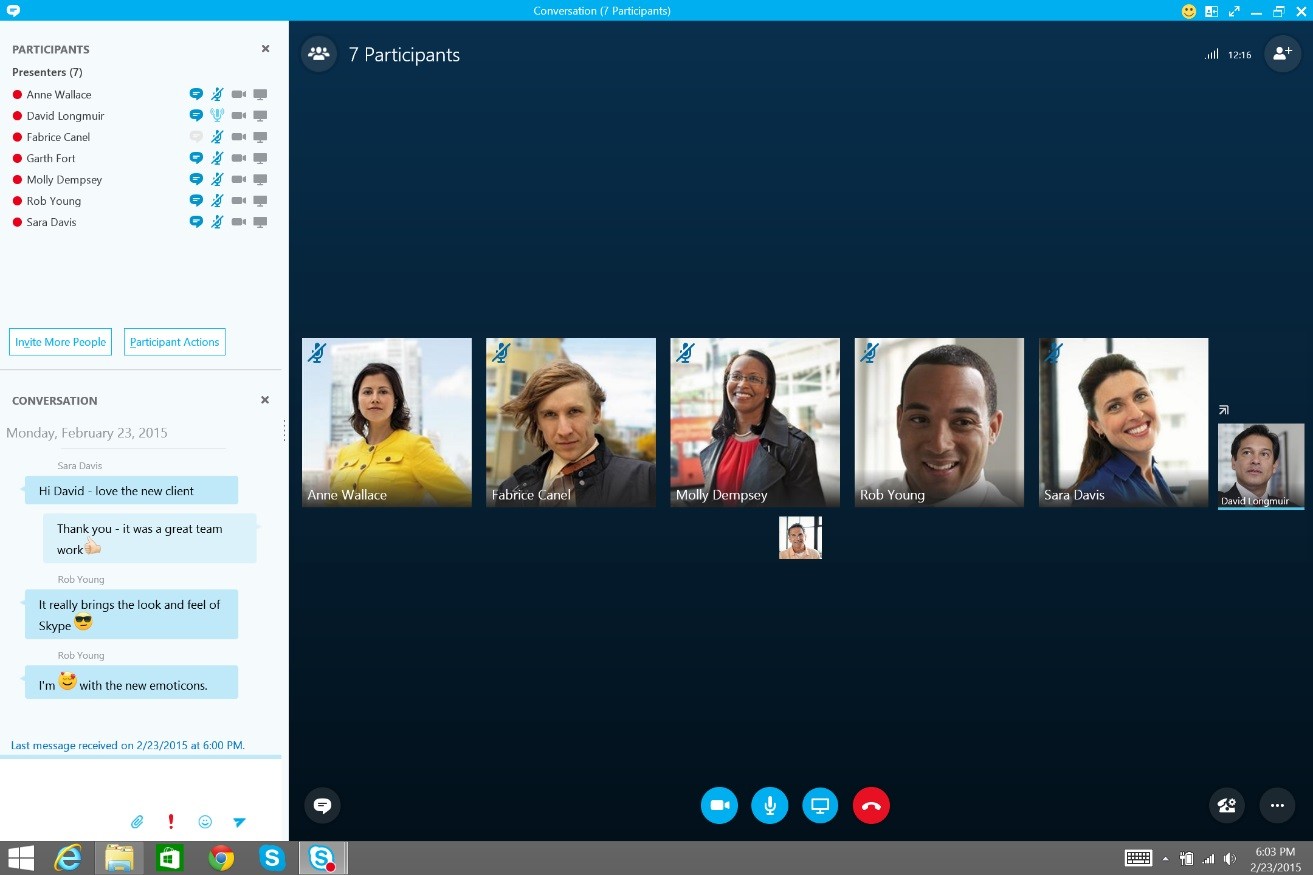

#Skype video conferencing software Offline#
Most of the everyday contacts went from the offline version to online form. The COVID-19 pandemic has ceased social contact offline. An extensive, but not exhaustive, bibliographic investigation was carried out, as well as data collection throughout different sources and an empirical process of using these two platforms and their tools to delimit their possibilities and restrictions. We understand that there is an important difference between these two platforms, while Skype is also widely used in informal meetings, Zoom is used mainly in formal situations, this difference is a relevant consideration since our goal is to analyse not only changes in interactions at work but also the changes in personal interactions.īased on the assumption described by McLuhan (1964) that considers not only the content, but the medium and culture that the media operates, this analysis will be guided both by materiality, with the technological element, through the interface, features and affordances, as well as the study of the social phenomenon, relate to the process of interaction through the platforms, the issue of privacy and mental health. How come Zoom seems to be the great winner from this pandemic rather than more established platforms? And why are many businesses choosing Zoom in spite of all privacy concerns over the service? What are the effects on the mental health of users being forced to substitute social content for technology? Over half a year into the pandemic, it is time to take a step back and evaluate the implications of the use of video conference platforms, more specifically, Zoom and Skype. In this context, this article seeks to answer questions regarding users and uses of video conferencing service Zoom during the COVID-19 pandemic. Researchers everywhere voiced their concerns over mental health being compromised for the greater good of flattening the curve (Jacobson et al.1 Rottenberg & Gruber n.pag.).

(2003) demonstrated that a substantial proportion of people submitted to quarantine suffered from distress, as evidenced by the proportion of people who present symptoms of post-traumatic stress disorder (PTSD) and depression during or after being quarantined. Graph 1: User growth of popular platforms in percentage.įrom school, to work, to family, to relationships and even sexual encounters, our social contact moved to digital spaces. Many other platforms also registered a growth in users due to the pandemic (see graph 1 below). According to Iqbal (2020) while 10 million participants attended meetings on Zoom each day at the end of 2019 by April 2020 usage had increased to 300 million participants, an incredible growth of 2900%. This led to a surge in users on all video conferencing platforms, with one of them taking the lead and navigating through this pandemic as the big winner: Zoom. At the same time, grandparents now have to distance from their families, forcing them to apply technology for personal contact instead. Institutions, governments, businesses big and small were forced to move towards a decentralised way of work that has everyone operating from the safety of their homes, connecting through means of video conferencing software. Due to the rapid geographical spread of the disease a state of pandemic was declared and life as we know it went on lock-down during the first wave of infections in March of 2020 (WHO ECDE, 2020). But what does that mean for us? What does the new normal look like, apart from masks and social distancing? If there is one thing the COVID-19 pandemic has definitely sped up, it’s the digitalisation of social life at large. The purpose of this article is to create a structure of analysis that highlights the possibilities and limitations of these platforms with focus on platform functionalities, contribution to mental health and privacy issues.Īs prime minister Rutte put it in a televised press conference on April 7th, the new normal has started (Rijksoverheid, 2020). In the following lines, a discussion will be developed on the role of video conference platforms in the pandemic context, especially Skype and Zoom platforms. Social contact has been dramatically shortened. Many countries have adopted different degrees of quarantine and remote work is on the rise. Communication has changed dramatically since COVID-19 spread.


 0 kommentar(er)
0 kommentar(er)
